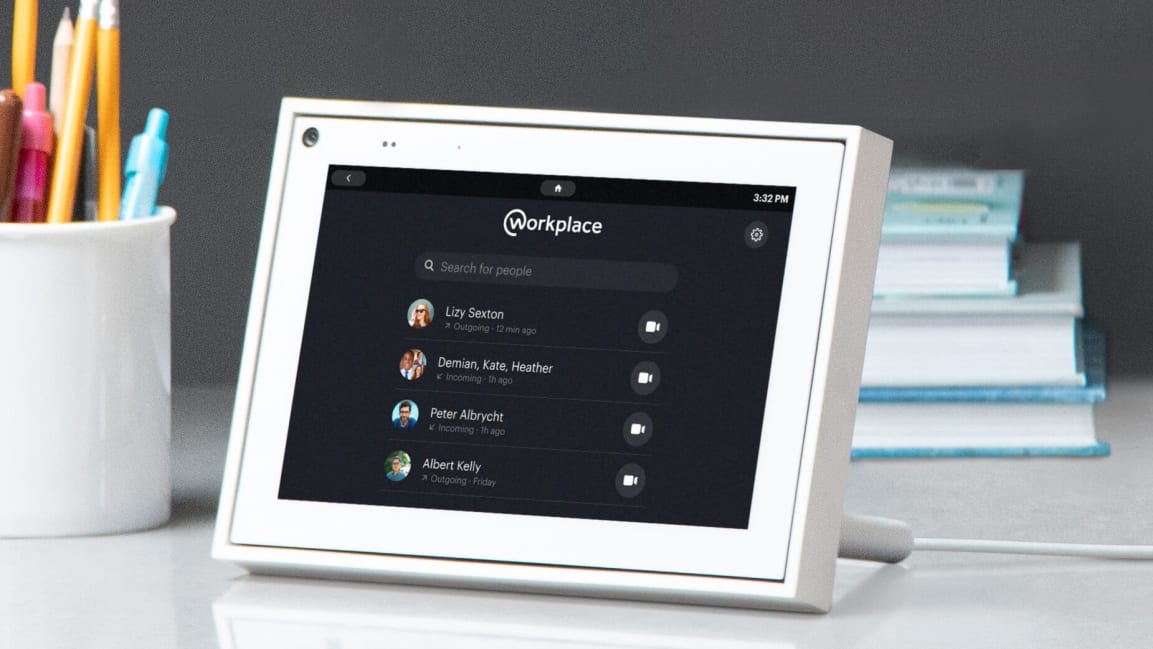Big companies are willing to give Facebook’s Workplace a shot
On Tuesday, Facebook held a conference called Flow at a hotel near its Menlo Park, California, headquarters. The event celebrated the company’s Workplace business collaboration service, and among the pieces of news was a new usage stat: Workplace now has three million paying customers, a figure that doesn’t count nonprofit customers who can use the service for free.
As is often the case with such statistics, it’s tough to use them to assess the service in question’s competitive situation. Microsoft says that its Teams service now has 13 million daily users, but hasn’t said how many pay. Slack just announced that it has 12 million, and—in a new move—said that six million of them are on paid plans.
Facebook said that Workplace’s three million customers are up from two million in February, a 50% jump in eight months. And they work for organizations that have chosen to pay Facebook to use Workplace, which is a very Facebook-like experience, tailored for business. That may sound like a rounding error compared to the 2.41 billion people who use Facebook itself every month, but it’s not bad for a piece of enterprise software that introduced paid plans only two years ago.
Workplace’s growth comes at a time when Facebook news in general still involves one controversy after another after another. Do all the dramas associated with Facebook discourage any prospective customers from adopting Workplace? At Flow, I posed that question to Karandeep Anand, Facebook’s head of Workplace.
Anand warned me that his answer would be nuanced, and he began by pointing out that the fact Workplace is a business-centric fraternal twin of the world’s largest social network is a selling point. Most people know how to use it without much training, a particular benefit given that many Workplace users are front-line workers who spend their days on their feet in environments such as retail stores rather than sitting at a desk. (Walmart and Starbucks are big customers, and 55% of all Workplace usage is on a mobile device.)
He added that Workplace benefits from the ability to leverage other parts of Facebook. That was certainly a theme of the news the service announced at Flow, which included an upcoming Workplace app for Facebook’s Portal video screen, auto-captioning and translations for video, and other features that pick up on products and technologies being deployed elsewhere within the company. “Being able to leverage the learnings from Instagram, WhatsApp, Messenger, and Facebook is a giant, giant pro, and probably one of the reasons why we are thriving in this business,” he told me.
As for any skepticism that Workplace must confront, Anand says it mostly involves big companies who are concerned that Workplace’s security measures might not be up to snuff. “We had to go earn security certifications and compliance certifications and prove that we can actually serve banks, governments, and healthcare,” he says. “We have GSK and AstraZeneca in healthcare, we have government of Singapore, now we have the city of Oslo.”
Workplace, Anand says, “had to own the right to be in the conversation. But the good thing is because we are so heavily scrutinized in the broader Facebook, Inc., it makes us feel pretty convinced that we can solve some really, really hard security and privacy challenges. We’ve stepped up the game.”
Of course, by getting as far as asking tough questions about Workplace security and compliance, an organization is indicating that it’s at least provisionally willing to consider to pay Facebook for business software. A really cynical outfit would laugh the idea off without pursuing it at all. One Flow attendee I chatted with, from a company that doesn’t currently use Workplace, was intrigued—though he also thought some of his colleagues might reject the idea of doing business with Facebook on the grounds that it was “toxic.”
Facebook has signed up enough large, well-known customers to prove that there’s a market for Workplace. Focusing on big companies outside the tech bubble—rather than doing battle with Slack for the hearts and minds of knowledge workers—seems as smart an approach as any. And judging from the service’s growth in 2019, it has some traction.
(15)



